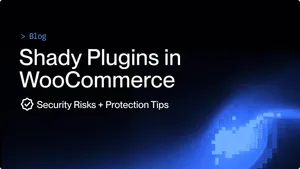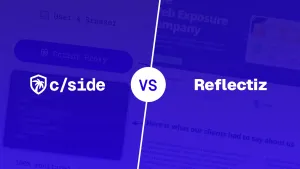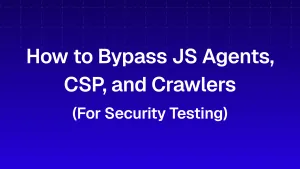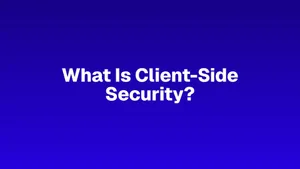This article takes an honest look at the features of Report URI.
Since you’re on the cside website, we acknowledge our bias. That said, we’ve built our case honestly and based our analysis on publicly available information, industry information, and our own or our customers' experiences.
If you want to verify their claims yourself, please navigate to their product pages.
| Criteria | cside | Report URI | Why It Matters | What the Consequences Are |
|---|---|---|---|---|
| Approaches used | Proxy | CSP Reporting Only | ||
| Real-time Protection | Attacks can occur between scans or in the excluded data when sampled | Delayed detection = active data breaches | ||
| Full Payload Analysis | Ensures deep visibility into malicious behaviors within script code itself | Threats go unnoticed unless the source is known on a threat feed | ||
| Dynamic Threat Detection | Identifies attacks that change based on user, time, or location | Missed detection of targeted attacks | ||
| DOM-Level Threat Detection | Tracks changes to the DOM and observes how scripts behave during runtime | Unable to identify sophisticated DOM-based attacks | ||
| 100% Historical Tracking & Forensics | Needed for incident response, auditing, and compliance | Needed for incident response, auditing, and compliance | ||
| Bypass Protection | Stops attackers from circumventing controls via DOM obfuscation or evasion | Stealthy threats continue undetected | ||
| Certainty the Script Seen by User is Monitored | Aligns analysis with what actually executes in the browser | Gaps between what’s reviewed and what’s actually executed | ||
| AI-driven Script Analysis | Detects novel or evolving threats through behavior modeling | Reliance on manual updates, threat feeds or rules = slow and error-prone detection | ||
| QSA validated PCI dash | The most reliable way to ensure a solution is PCI compliant is to conduct a thorough audit by an independent QSA | Without QSA validation, you rely entirely on marketing claims, which could result in failing an audit | ||
| SOC 2 Type II | Shows consistent operational security controls over time | Lacks verified security control validation, making it a risky vendor | ||
| PCI specific UI | An easy interface for quick script review and justification via one click or AI automation | Mundane tasks and manual research on what all the scripts do, which takes hours or days |
What is Report URI?
Report URI is a reporting platform that collects browser-generated security violation reports and helps teams monitor and fine-tune their web and email security policies. It primarily supports Content Security Policy (CSP) reporting, which is by far the most common use case next to their SMPT email security service.
How Report URI works
Businesses need to configure their HTTP security headers to point to their unique Report URI endpoint. For example, with a Content Security Policy (CSP), they include a report-uri or report-to directive in the header that tells browsers where to send violation data.
CSP is almost entirely what Report URI provides. While a common used security system, it's often not robust enough to handle client-side attacks.
A CSP acts like a firewall which only trusts pre-approved script sources, not their content. Should the source stay the same but the content changes, like in the biggest client-side attack of 2024 – Polyfill – a CSP won’t catch it.
We wrote an in depth article on Why CSP Doesn’t Work in regards to providing the best client-side security solution:
CSP operates on an allow-list model, which permits resources from trusted domains but cannot block individual scripts or resources from those domains.
Report URI doesn’t block anything itself. It just receives reports from the browser and gives teams visibility into violations and misconfigurations. It all relies on native browser behavior.
Report URI also offers email security. SMTP-TLSRPT is a reporting standard that lets mail servers send reports about email transport encryption issues (i.e. STARTTLS failures). If you're using MTA-STS (Mail Transfer Agent Strict Transport Security), browsers or receiving servers can generate reports about delivery failures or downgrade attacks and send them to a specified endpoint.
So just like with CSP for browsers, you add a header (or DNS TXT record) to your mail domain that points to a Report URI endpoint, and it will collect and display those SMTP reports.
Report URI also supports other browser reporting mechanisms like Subresource Integrity (SRI) failures, Network Error Logging (NEL), Cross-Origin policies (COOP and COEP), and deprecated feature usage.
The most adjacent features to cside would be Report URI Script Watch, which tracks the presence and changes of third-party JavaScript on your site, and Data Watch, which detects when sensitive form fields may be exposed to third-party code.
How cside goes further
Cside primarily offers a hybrid proxy approach which sits in between the user session and the 3rd party service. It analyzes the served dependencies code in real-time before serving it to the user.
This allows us to not only spot advanced highly targeted attacks and alert on them, cside also makes it possible to block attacks before they touch the user's browser. It also checks the box for multiple compliance frameworks, including PCI DSS 4.0.1. We even provide deep forensics, including if an attacker bypasses our detections. Allowing you to more tightly scope the size of the incident us to make our detection capabilities better every day. No other vendor has this capability.
We believe this is the most secure way to monitor and protect your dependencies across your entire website. We've spent years in the client-side security space before we started cside, we've seen it all, this is the only way you can actually spot an attack.
We also offer a free CSP endpoint on top of our product to allow for layering, it's included. With cside, you basically get the same thing as Report-URI on top for free.
Sign up or book a demo to get started.












